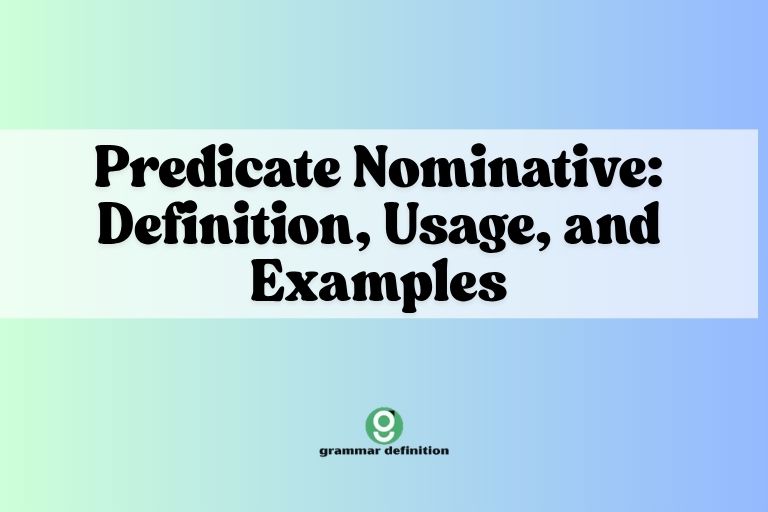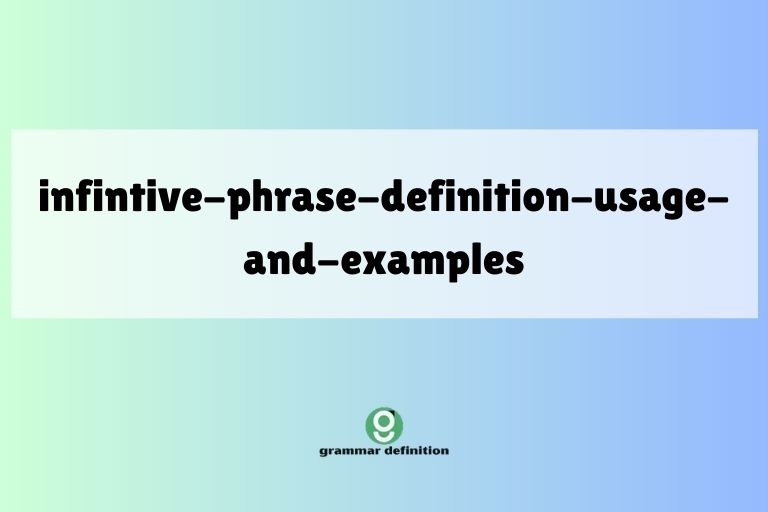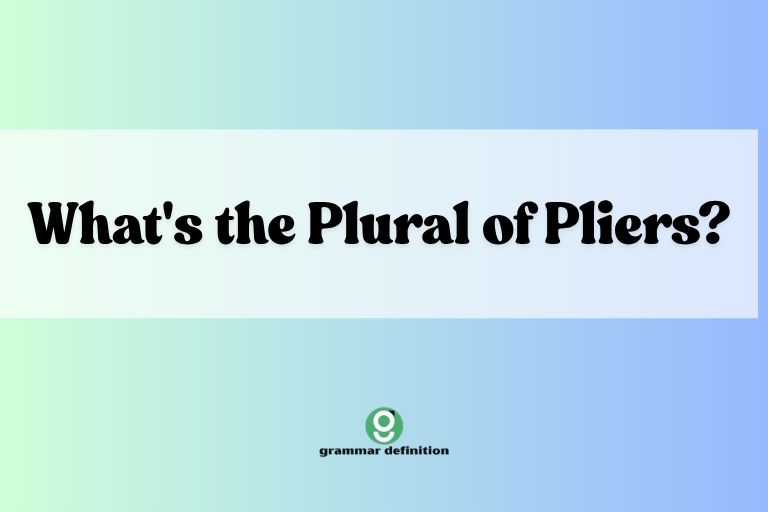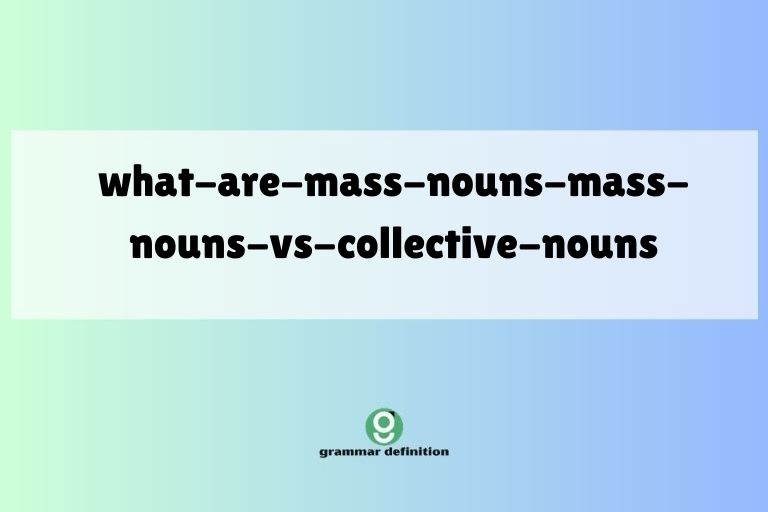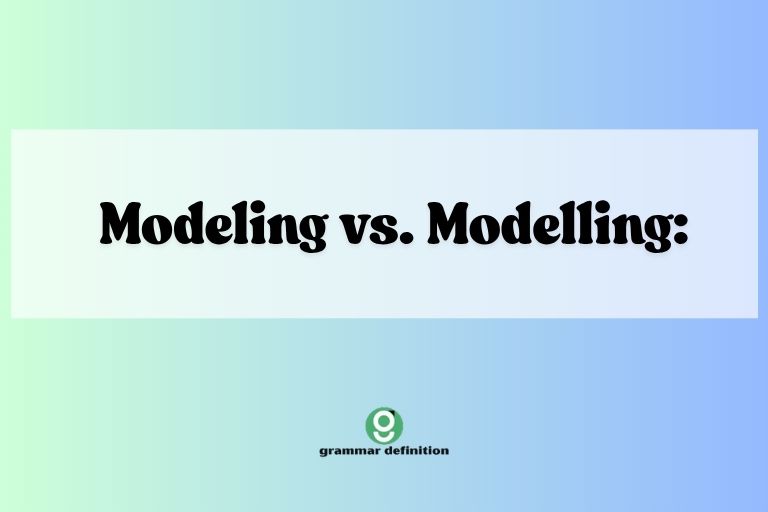The Oxford Comma: A Comprehensive Guide to Serial Commas

The Oxford comma, also known as the serial comma, is a seemingly small punctuation mark that sparks significant debate among writers and editors. While its presence (or absence) might appear trivial, understanding its function and usage is crucial for clarity and precision in writing.
This article provides a comprehensive guide to the Oxford comma, exploring its definition, structure, usage rules, common mistakes, and more. Whether you’re a student, a professional writer, or simply someone interested in improving your grammar, this guide will equip you with the knowledge you need to confidently navigate the world of serial commas.
Mastering the Oxford comma helps avoid ambiguity and ensures that your intended meaning is accurately conveyed to your readers. By understanding its role in structuring lists and clarifying relationships between items, you can significantly enhance the clarity and professionalism of your writing.
This guide aims to be your go-to resource for all things Oxford comma, providing clear explanations, practical examples, and helpful exercises to solidify your understanding.
Table of Contents
- Definition of the Oxford Comma
- Structural Breakdown
- Types and Categories
- Examples of Oxford Comma Usage
- Usage Rules
- Common Mistakes
- Practice Exercises
- Advanced Topics
- Frequently Asked Questions
- Conclusion
Definition of the Oxford Comma
The Oxford comma, also referred to as the serial comma or the Harvard comma, is a comma placed before the conjunction (usually and or or) in a list of three or more items. Its primary function is to enhance clarity and prevent ambiguity, particularly when the items in the list are complex or could be misinterpreted as a single unit.
In essence, the Oxford comma acts as a separator, ensuring that each item in the list is clearly distinguished from the others. While some style guides mandate its use (such as the Oxford University Press style guide, hence the name), others consider it optional, leaving the decision to the writer’s discretion based on the specific context and potential for misinterpretation.
The debate over its necessity often boils down to a matter of clarity versus stylistic preference.
The Oxford comma’s role is to disambiguate lists where the omission of the comma could lead to confusion. For instance, consider the sentence: “I love my parents, Lady Gaga and Humpty Dumpty.” Without the Oxford comma, it might appear that the speaker’s parents are Lady Gaga and Humpty Dumpty.
The comma clarifies that these are separate entities.
Classification and Function
The Oxford comma falls under the broader category of punctuation marks, specifically commas. Its function is to separate items in a list, similar to other commas used within sentences. However, its unique position before the final conjunction in a series distinguishes it and gives it its name. It serves as a tool for clarity, aiming to prevent misreading and ensure the accurate interpretation of the sentence.
The Oxford comma improves readability by visually separating the list items. This is particularly useful in long lists or when the items themselves contain conjunctions or other potentially confusing elements.
Its inclusion can remove ambiguity and make sentences easier to understand at a glance.
Contexts of Use
The Oxford comma is most commonly used in the following contexts:
- Lists of nouns: “I bought apples, bananas, and oranges.”
- Lists of verbs: “She likes to read, write, and sing.”
- Lists of adjectives: “The movie was long, boring, and predictable.”
- Complex lists: “The committee consisted of John Smith, the CEO; Jane Doe, the CFO; and Robert Jones, the legal counsel.”
The decision to use the Oxford comma often depends on the style guide being followed. Some publications and organizations have strict rules regarding its use, while others allow for more flexibility.
It’s important to be aware of the preferred style guide when writing professionally or academically.
Structural Breakdown
The structure involving the Oxford comma is relatively straightforward. It always appears as the final comma in a list of three or more items, immediately preceding the coordinating conjunction (typically “and” or “or”).
The elements of the structure are the list items, the commas separating them, the Oxford comma itself, and the coordinating conjunction.
A typical list structure with the Oxford comma looks like this: Item 1, Item 2, and Item 3. The Oxford comma sits comfortably between “Item 2” and “and,” providing that final separation. Without the Oxford comma, the structure would be: Item 1, Item 2 and Item 3, which some argue can lead to ambiguity.
Elements and Patterns
The core elements of the Oxford comma structure are:
- List Items: The individual elements that make up the list. These can be nouns, verbs, adjectives, or phrases.
- Commas: Used to separate the list items from each other.
- Oxford Comma: The final comma placed before the conjunction.
- Coordinating Conjunction: Usually “and” or “or,” connecting the last two items in the list.
The pattern is consistent: Item, Item, … , and/or Item. The ellipsis (…) indicates that there can be any number of items in the list before the final two.
Examples of Different Structures
Here are a few examples of different list structures incorporating the Oxford comma:
- Simple Noun List: “I need to buy milk, bread, and eggs.”
- Verb Phrase List: “He enjoys hiking, camping, and fishing.”
- Adjective List: “The car was fast, sleek, and expensive.”
- Complex Phrase List: “The speaker thanked her parents, her mentors, and the entire audience for their support.”
In each of these examples, the Oxford comma ensures that each item in the list is clearly delineated, preventing potential ambiguity.
Types and Categories
While the Oxford comma itself doesn’t have different “types,” its application can vary depending on the type of list and the context. Here are some categories to consider:
Simple Lists
Simple lists involve straightforward items that are unlikely to cause confusion even without the Oxford comma. For example, “I ate pizza, pasta and salad.” However, even in simple lists, the Oxford comma can enhance clarity and consistency.
Complex Lists
Complex lists contain items that are more descriptive or could be misinterpreted as a single unit. For example, “I invited the singers, the dancers, and the stage crew.” Without the Oxford comma, “dancers and the stage crew” could be read as a single entity.
Lists with Phrases
When list items are phrases, the Oxford comma becomes even more crucial for clarity. For example, “She thanked her mother, her father, and her childhood friend.” The commas help to clearly separate each relationship.
Lists within Lists (with Conjunctions)
Sometimes, list items themselves contain conjunctions. In these cases, the Oxford comma is almost always necessary to prevent confusion.
Example: “We needed paper, pens and pencils, and erasers.”
Examples of Oxford Comma Usage
The best way to understand the Oxford comma is through examples. Here are several tables showcasing its use in various contexts.
The following table provides examples of sentences that benefit greatly from the use of the Oxford comma, clarifying the relationships between list items and avoiding potential misinterpretations. Each example demonstrates how the Oxford comma enhances readability and precision.
| Without Oxford Comma | With Oxford Comma | Explanation |
|---|---|---|
| I dedicate this book to my parents, Ayn Rand and God. | I dedicate this book to my parents, Ayn Rand, and God. | Clarifies that the author is dedicating the book to three separate entities, not implying that the parents are Ayn Rand and God. |
| We invited the strippers, JFK and Stalin. | We invited the strippers, JFK, and Stalin. | Avoids the humorous (and likely unintended) implication that JFK and Stalin are strippers. |
| The recipe calls for eggs, cheese and bacon. | The recipe calls for eggs, cheese, and bacon. | Provides a clearer separation of the ingredients. |
| My favorite colors are red, white and blue. | My favorite colors are red, white, and blue. | While often acceptable without, the Oxford comma provides consistency and extra clarity. |
| She enjoys reading books, watching movies and listening to music. | She enjoys reading books, watching movies, and listening to music. | The Oxford comma makes it easier to parse the list of activities. |
| The company sells shirts, pants and shoes. | The company sells shirts, pants, and shoes. | A clear and unambiguous list of products. |
| He visited Paris, Rome and London. | He visited Paris, Rome, and London. | Provides a more formal and clear list of the cities visited. |
| The project requires planning, execution and monitoring. | The project requires planning, execution, and monitoring. | The Oxford comma enhances the separation of the stages of the project. |
| She bought a dress, a hat and a pair of shoes. | She bought a dress, a hat, and a pair of shoes. | A straightforward list of purchased items is made even clearer. |
| The report covered sales, marketing and finance. | The report covered sales, marketing, and finance. | The Oxford comma clearly separates the departments covered in the report. |
| I need to buy milk, bread and butter. | I need to buy milk, bread, and butter. | The Oxford comma provides clarity in this shopping list. |
| She thanked her parents, her teachers and her friends. | She thanked her parents, her teachers, and her friends. | Clear separation of the groups she thanked. |
| The menu includes soup, salad and sandwiches. | The menu includes soup, salad, and sandwiches. | The Oxford comma provides a clear list of menu items. |
| He likes to play football, basketball and tennis. | He likes to play football, basketball, and tennis. | The Oxford comma enhances the separation of the sports he likes. |
| The conference featured speakers, workshops and networking events. | The conference featured speakers, workshops, and networking events. | Clear separation of the conference features. |
| She studied history, math and science. | She studied history, math, and science. | The Oxford comma enhances the separation of the subjects she studied. |
| The museum displays paintings, sculptures and artifacts. | The museum displays paintings, sculptures, and artifacts. | Clear separation of the types of items on display. |
| The tour included Italy, France and Spain. | The tour included Italy, France, and Spain. | The Oxford comma provides a clear list of the countries visited. |
| The team needs dedication, hard work and collaboration. | The team needs dedication, hard work, and collaboration. | Clear separation of the qualities needed by the team. |
| The course covers grammar, vocabulary and pronunciation. | The course covers grammar, vocabulary, and pronunciation. | The Oxford comma enhances the separation of the course topics. |
The following table illustrates scenarios where the omission of the Oxford comma can lead to ambiguity and misinterpretation. By comparing sentences with and without the Oxford comma, the table highlights the importance of this punctuation mark in ensuring clarity and precision in communication.
| Without Oxford Comma | With Oxford Comma | Explanation |
|---|---|---|
| I love my parents, Oprah Winfrey and Santa Claus. | I love my parents, Oprah Winfrey, and Santa Claus. | Without the Oxford comma, it sounds like the speaker’s parents are Oprah Winfrey and Santa Claus. |
| We had coffee, cake and ice cream. | We had coffee, cake, and ice cream. | Omission doesn’t necessarily cause ambiguity, but the Oxford comma provides a more formal and clearer separation. |
| The author thanked her husband, the director and the producer. | The author thanked her husband, the director, and the producer. | Without the Oxford comma, it’s less clear whether the husband is also the director or producer. |
| She listed her skills as writing, editing and proofreading. | She listed her skills as writing, editing, and proofreading. | While not strictly ambiguous, the Oxford comma enhances clarity. |
| He enjoys hiking, camping and fishing. | He enjoys hiking, camping, and fishing. | The Oxford comma provides a more distinct separation of the activities. |
| The store sells books, magazines and newspapers. | The store sells books, magazines, and newspapers. | The Oxford comma clarifies the list of items sold. |
| The project requires planning, execution and delivery. | The project requires planning, execution, and delivery. | Clearer separation of the project phases. |
| The menu includes appetizers, entrees and desserts. | The menu includes appetizers, entrees, and desserts. | The Oxford comma enhances the separation of the menu categories. |
| She studied art, music and theater. | She studied art, music, and theater. | Clear separation of the subjects studied. |
| The museum displays paintings, sculptures and artifacts. | The museum displays paintings, sculptures, and artifacts. | The Oxford comma enhances the separation of the types of displays. |
| The tour included Rome, Paris and London. | The tour included Rome, Paris, and London. | The Oxford comma clarifies the list of cities visited. |
| The team needs dedication, hard work and collaboration. | The team needs dedication, hard work, and collaboration. | Clearer separation of the team’s needs. |
| The course covers grammar, vocabulary and pronunciation. | The course covers grammar, vocabulary, and pronunciation. | The Oxford comma enhances the separation of course topics. |
| I bought apples, oranges and bananas. | I bought apples, oranges, and bananas. | The Oxford comma provides clarity in this shopping list. |
| She thanked her parents, her siblings and her friends. | She thanked her parents, her siblings, and her friends. | Clear separation of the groups she thanked. |
| The menu includes soup, salad and sandwiches. | The menu includes soup, salad, and sandwiches. | The Oxford comma provides a clear list of menu items. |
| He likes to play soccer, basketball and tennis. | He likes to play soccer, basketball, and tennis. | The Oxford comma enhances the separation of the sports he likes. |
| The conference featured speakers, workshops and networking. | The conference featured speakers, workshops, and networking. | Clear separation of the conference features. |
| She studied history, math and science. | She studied history, math, and science. | The Oxford comma enhances the separation of the subjects she studied. |
| The museum displays paintings, sculptures and artifacts. | The museum displays paintings, sculptures, and artifacts. | Clear separation of the types of items on display. |
This table presents examples where the Oxford comma is generally considered optional but can still contribute to clarity and consistency. These instances highlight the flexibility of the Oxford comma and how its inclusion can be a matter of stylistic preference while maintaining grammatical correctness.
| Without Oxford Comma | With Oxford Comma | Explanation |
|---|---|---|
| I had coffee, toast and eggs for breakfast. | I had coffee, toast, and eggs for breakfast. | Both versions are acceptable, but the Oxford comma provides a slight increase in clarity. |
| The flag is red, white and blue. | The flag is red, white, and blue. | The Oxford comma enhances the separation of the colors. |
| She packed clothes, books and snacks for the trip. | She packed clothes, books, and snacks for the trip. | The Oxford comma clarifies the items packed. |
| He enjoys running, swimming and cycling. | He enjoys running, swimming, and cycling. | The Oxford comma provides a more distinct separation of the activities. |
| The store sells shirts, pants and shoes. | The store sells shirts, pants, and shoes. | The Oxford comma clarifies the list of items sold. |
| The project requires planning, execution and review. | The project requires planning, execution, and review. | Clearer separation of the project phases. |
| The menu includes soup, salad and bread. | The menu includes soup, salad, and bread. | The Oxford comma enhances the separation of the menu items. |
| She studied art, music and dance. | She studied art, music, and dance. | Clear separation of the subjects studied. |
| The museum displayed paintings, sculptures and pottery. | The museum displayed paintings, sculptures, and pottery. | The Oxford comma enhances the separation of the types of displays. |
| The tour included Rome, Florence and Venice. | The tour included Rome, Florence, and Venice. | The Oxford comma clarifies the list of cities visited. |
| The team needs focus, hard work and dedication. | The team needs focus, hard work, and dedication. | Clearer separation of the team’s needs. |
| The course covers grammar, spelling and punctuation. | The course covers grammar, spelling, and punctuation. | The Oxford comma enhances the separation of course topics. |
| I bought apples, bananas and grapes. | I bought apples, bananas, and grapes. | The Oxford comma provides clarity in this shopping list. |
| She thanked her parents, her family and her friends. | She thanked her parents, her family, and her friends. | Clear separation of the groups she thanked. |
| The menu includes appetizers, salads and desserts. | The menu includes appetizers, salads, and desserts. | The Oxford comma provides a clear list of menu items. |
| He likes to play soccer, tennis and golf. | He likes to play soccer, tennis, and golf. | The Oxford comma enhances the separation of the sports he likes. |
| The conference featured speakers, panels and workshops. | The conference featured speakers, panels, and workshops. | Clear separation of the conference features. |
| She studied history, literature and philosophy. | She studied history, literature, and philosophy. | The Oxford comma enhances the separation of the subjects she studied. |
| The museum displays paintings, drawings and prints. | The museum displays paintings, drawings, and prints. | Clear separation of the types of items on display. |
| The tour included London, Paris and Berlin. | The tour included London, Paris, and Berlin. | The Oxford comma provides a clear list of the cities visited. |
Usage Rules
The primary rule for the Oxford comma is simple: use it before the coordinating conjunction (usually “and” or “or”) in a list of three or more items. However, the application of this rule can be nuanced depending on the style guide being followed and the context of the sentence.
Consistency is Key: Regardless of whether you choose to use the Oxford comma, it’s crucial to be consistent throughout your writing. Mixing styles within the same document can be confusing and unprofessional.
Mandatory Usage
Some style guides, such as those used by Oxford University Press and the Modern Language Association (MLA), mandate the use of the Oxford comma. In these contexts, omitting the comma is considered an error.
Publications and organizations that follow these style guides are strict about its inclusion.
Optional Usage
Other style guides, such as the Associated Press (AP) style, consider the Oxford comma optional. AP style generally recommends omitting the comma unless its omission would lead to ambiguity.
In these cases, the writer has the discretion to decide whether or not to include the comma based on the specific context.
Exceptions and Special Cases
There are a few exceptions and special cases to consider:
- When Clarity is Not an Issue: If the list is short and there is no risk of ambiguity, omitting the Oxford comma is often acceptable, even in style guides that generally recommend its use.
- Complex Lists: When the list items themselves contain commas or are complex phrases, the Oxford comma is almost always necessary for clarity.
- Style Guide Preferences: Always adhere to the specific style guide required by the publication or organization you are writing for.
Common Mistakes
The most common mistake involving the Oxford comma is inconsistent usage. Here are some other frequent errors:
Omitting When Needed
Failing to include the Oxford comma in situations where it is necessary for clarity can lead to ambiguity and misinterpretation. Consider the example: “I thanked my parents, the director and the producer.” Without the Oxford comma, it’s unclear whether the parents are also the director and producer.
Incorrect: I thanked my parents, the director and the producer.
Correct: I thanked my parents, the director, and the producer.
Incorrect Placement
Placing the Oxford comma in the wrong position is another common error. The Oxford comma should always come immediately before the coordinating conjunction (and/or).
Incorrect: I need to buy milk , bread, and eggs.
Correct: I need to buy milk, bread, and eggs.
Using with Only Two Items
The Oxford comma is only used in lists of three or more items. Using it with only two items is incorrect.
Incorrect: I need milk, and bread.
Correct: I need milk and bread.
Practice Exercises
Test your understanding of the Oxford comma with these practice exercises. Determine whether the Oxford comma is needed in each sentence and add it where appropriate.
Instructions: Read each sentence carefully. Decide whether the sentence requires an Oxford comma for clarity or according to common style guidelines. If it does, rewrite the sentence with the Oxford comma included. If the sentence is correct as is, indicate “Correct.”
| Question | Answer |
|---|---|
| 1. I like apples, bananas and oranges. | I like apples, bananas, and oranges. |
| 2. She enjoys reading, writing and singing. | She enjoys reading, writing, and singing. |
| 3. The movie was long boring and predictable. | The movie was long, boring, and predictable. |
| 4. I need to buy milk and bread. | Correct |
| 5. He visited Paris Rome and London. | He visited Paris, Rome, and London. |
| 6. The company sells shirts pants and shoes. | The company sells shirts, pants, and shoes. |
| 7. She thanked her parents the director and the producer. | She thanked her parents, the director, and the producer. |
| 8. We had coffee cake and ice cream. | We had coffee, cake, and ice cream. |
| 9. I love my parents Oprah Winfrey and Santa Claus. | I love my parents, Oprah Winfrey, and Santa Claus. |
| 10. He enjoys hiking camping and fishing. | He enjoys hiking, camping, and fishing. |
Instructions: Identify whether each of the following sentences is correct or incorrect in its use of the Oxford comma. If incorrect, explain why.
| Question | Answer |
|---|---|
| 1. I need to buy milk, bread, and eggs. | Correct |
| 2. She enjoys reading, and writing. | Incorrect. The Oxford comma is not used with only two items. |
| 3. The movie was long, boring and predictable. | Incorrect. Needs an Oxford comma. |
| 4. I need to buy milk and bread. | Correct |
| 5. He visited Paris, Rome, and London. | Correct |
| 6. The company sells shirts, pants and shoes. | Incorrect. Needs an Oxford comma. |
| 7. She thanked her parents, the director, and the producer. | Correct |
| 8. We had coffee, cake and ice cream. | Incorrect. Needs an Oxford comma for clarity. |
| 9. I love my parents, Oprah Winfrey, and Santa Claus. | Correct |
| 10. He enjoys hiking, camping, and fishing. | Correct |
Advanced Topics
For advanced learners, consider these more complex aspects of the Oxford comma:
Oxford Comma and Style Guides
Different style guides have different rules regarding the Oxford comma. Understanding these differences is crucial for professional writers and editors.
Research the specific guidelines of the style guide you are required to follow.
Oxford Comma in Legal Writing
In legal writing, the presence or absence of the Oxford comma can have significant implications. Courts have even ruled on cases where the interpretation of a clause hinged on the presence (or absence) of the Oxford comma.
Precision is paramount in legal documents, making the Oxford comma a critical consideration.
Oxford Comma in Technical Writing
Technical writing often involves complex lists and detailed instructions. The Oxford comma can be particularly useful in this context to ensure clarity and prevent ambiguity.
Clear and concise communication is essential in technical documentation.
Frequently Asked Questions
Here are some frequently asked questions about the Oxford comma:
- What is the Oxford comma?
The Oxford comma, also known as the serial comma, is a comma placed before the conjunction (usually “and” or “or”) in a list of three or more items. It enhances clarity and prevents ambiguity. - Is the Oxford comma mandatory?
It depends on the style guide you are following. Some style guides, like those used by Oxford University Press and MLA, mandate its use. Others, like AP style, consider it optional. - When should I use the Oxford comma?
Use it when you want to ensure clarity in a list, especially if the list items are complex or could be misinterpreted. Also, use it if the style guide you are following requires it. - When can I omit the Oxford comma?
You can omit the Oxford comma if the list is short and there is no risk of ambiguity, or if the style guide you are following allows for its omission. - What happens if I use the Oxford comma incorrectly?
Using the Oxford comma incorrectly can lead to confusion or a perception of unprofessionalism. Always double-check your usage and adhere to the style guide you are following. - Does the Oxford comma change the meaning of a sentence?
Yes, in some cases, the presence or absence of the Oxford comma can change the meaning of a sentence. It can clarify the relationships between list items and prevent misinterpretations. - Is the Oxford comma used in all English-speaking countries?
Yes, the Oxford comma is used in all English-speaking countries, but its usage is governed by the style guides followed in those regions. The preference for its use may vary. - How can I remember to use the Oxford comma correctly?
Practice using the Oxford comma in your writing and familiarize yourself with the style guide you are following. Pay attention to examples and exercises to reinforce your understanding.
Conclusion
The Oxford comma, while seemingly small, plays a significant role in enhancing clarity and preventing ambiguity in writing. Understanding its definition, structure, and usage rules is crucial for effective communication.
Whether you choose to embrace it or avoid it, consistency and awareness of style guide preferences are key.
By mastering the Oxford comma, you can elevate the professionalism and precision of your writing. Pay attention to the context of your sentences, consider the potential for misinterpretation, and adhere to the guidelines of your chosen style guide.
With practice and attention to detail, you can confidently navigate the world of serial commas and improve the clarity of your written communication.

